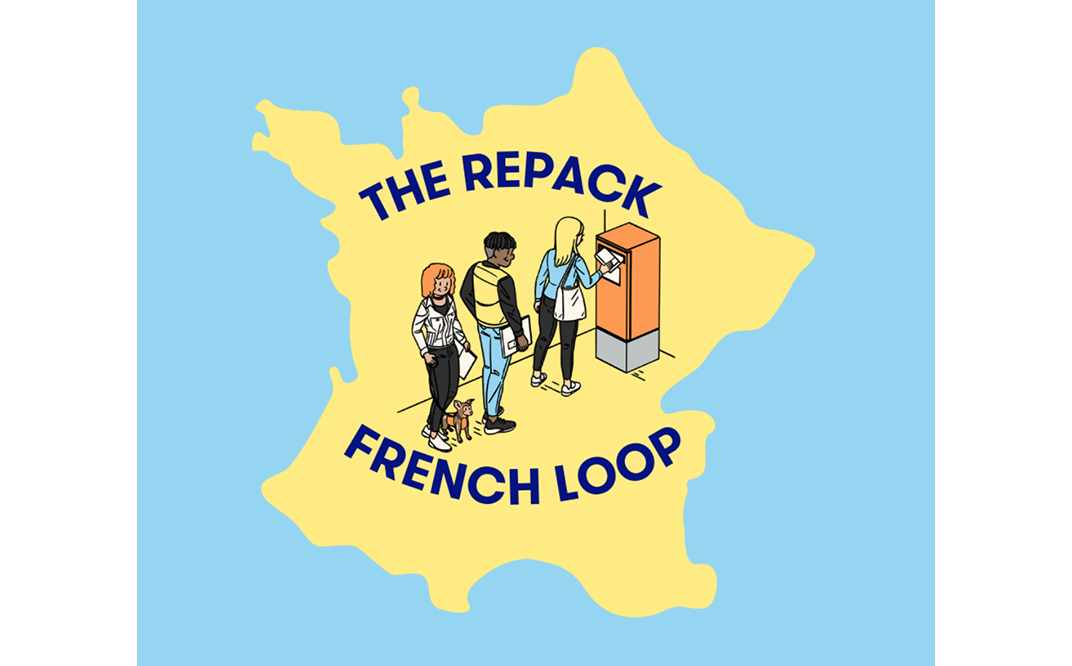Since the beginning of 2019, Picture has worked hard to reduce the environmental impact of the plastic packaging used for its products.
Read more here for an in-depth explanation on our progress to eliminate polybags, the plastic bags used to protect our products during shipping.
In this article, we plan to discuss the exterior packaging used to deliver products to individual consumers.
Cardboard boxes (made with recycled materials or not) represent the easiest and most common solution. However, while recycling cardboard boxes works well, there are good reasons to question their continued use:
- Recycling cardboard boxes requires energy.
- Even when using recycled materials, cardboard boxes still need to be manufactured, requiring additional energy and resources..
- And so on and so forth… This type of packaging can still be considered waste.
With each Picture product shipped, we participate in this vicious circle.
So how can we improve and reduce our impact?
We discovered RePack packaging, an initiative to provide a concrete, simple, and efficient solution for reusable packaging!
Based on the principles of the circular economy, the system is so simple that we wonder why it never occurred to anyone until now to develop. So how does RePack packaging work?

1/ Picture orders RePack’s reusable packaging.
2/ Your order is delivered in RePack packaging.
3/ You receive your order. RePack packaging has pre-paid postage, so is ready to be sent back once you empty the contents.
4/ Place the packing in a mailbox.
5/ Once returned, RePack reconditions the packaging. At this point, you receive a 10% discount to be used on our website.
6/ The process starts all over again!

This concept maximizes reuse. According to RePack, some of its packaging has already been reused at least 50 times! Made with recycled polypropylene, which is recyclable, tough as nails, and waterproof, RePack’s packaging solutions are clearly made to last. This is the complete opposite of all single-use packaging.
To justify the environmental benefit of reuse and demonstrate its relevance relative to recycling, RePack conducted an analysis of the CO2 emissions during the lifecycle of three types of packaging: a cardboard box, a soft-plastic bag, and a reusable RePack packaging solution.
- The lifecycle for a cardboard box and soft-plastic bag includes: manufacturing, a single use, transport, and then either recycling or disposal (incineration or landfill). Each new cycle means a new box or bag.
- For RePack, the lifecycle includes manufacturing, a return, and then reconditioning. With each new cycle, the same packaging is used.
Here are the results:
Making a RePack package emits more CO2 than a traditional cardboard box or plastic bag (0.32 kg of CO2 compared to 0.26 and 0.23 respectively).
However, the tables turn from there on out since RePack packaging is reusable: no need for recycling or disposal.
Here are the results in graph and table form:
Upon its second use, RePack packing pollutes 21% less than a cardboard box and 31% less than a soft-plastic bag. Logically, this reduction continues to rise with each reuse. By its 20th use, RePack packaging pollutes 75% less than a cardboard box and 78% less than a soft-plastic bag.
At this point, the 2 other packaging options have been manufactured and disposed of (or recycled) for the 20th time!
This translates to a lot of wasted energy and CO2 emissions, the greatest contributor to global warming.
From this point of view, RePack offers an extremely opportune packaging solution. However, like any project, it is important to be forthright about the drawbacks and improvements to be made. In RePack’s case, all packaging is sent to Estonia for reconditioning. The lifecycle could be even more virtuous if the company opened reconditioning centers locally by country. To be continued!
UPDATE! Spring 2021 :
Repack and La Poste are now in cooperation to develop a #FrenchLoop in France!
In other words, the RePacks received in France will be intercepted by La Poste with the aim that the entire process can be handled locally, supporting a social and circular economy.
Great move!

What about consumers?
According to a study conducted in 2019 by the International Post Corporation, when asked, “Would you like the packaging for your parcels to be reusable?” 79% of respondents said yes. In addition, 35% of the people surveyed had already changed their online purchasing behavior for environmental reasons.
(The study surveyed more than 35,000 consumers in 40 countries.)
With this clear willingness to change behavior, we plan to take action by launching a test phase in fall of 2020.

However, a few questions remain on our end and we need your feedback:
- RePack packaging costs €3. We would like to know if we should add this to the shipping cost, if you would be willing to share this extra cost with us, or if Picture should absorb the extra cost.
- Should Repack become the only shipping option for home deliveries to private individuals?
- For the same amount of carbon emissions, how should we explain the return process? By newsletter or by including instructions with the Repack packaging.
Thank you for your help!
